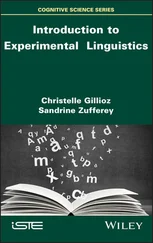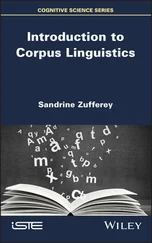Hoekstra, T. and N. Hyams (1998) ‘Aspects of root infinitives’, manuscript, UCLA and HIL-RU Leiden.
Holmes, J. (1997) ‘Maori and Pakeha English: some New Zealand social dialect data’, Language in Society 26: 65–101.
(2008) An Introduction to Sociolinguistics, London, Longman.
Holmquist, J. (1985) ‘Social correlates of a linguistic variable: a study in a Spanish village’, Language in Society 14: 191–203.
Hornstein, N. (1995) Logical Form: From GB to Minimalism, Oxford, Blackwell.
Hornstein, N., J. Nunes and K. Grohmann (2005) Understanding Minimalism, Cambridge, Cambridge University Press.
Horvath, B. (1985) Variation in Australian English: The Sociolects of Sydney, Cambridge, Cambridge University Press.
Houston, A. (1991) ‘A grammatical continuum for (ing)’, in P. Trudgill and J. Chambers (eds.), Dialects of English: Studies in Grammatical Variation, London, Longman.
Hudson, R. (1996) Sociolinguistics, Cambridge, Cambridge University Press.
Hyams, N. (1986) Language Acquisition and the Theory of Parameters, Dordrecht, Reidel.
Ingram, D. (1989) First Language Acquisition: Method, Description and Explanation, Cambridge, Cambridge University Press.
Ingram, J. (2007) Neurolinguistics: An Introduction to Spoken Language Processing and its Disorders, Cambridge, Cambridge University Press.
Kager, R. (1999) Optimality Theory, Cambridge, Cambridge University Press.
Katamba, F. (1993) Morphology, Basingstoke, Macmillan.
Bibliography
419
(1994) English Words, London, Routledge.
Kim, K. H., N. R. Relkin, K.-M. Lee and J. Hirsch (1997) ‘Distinct cortical areas associated with native and second language’, Nature 388: 171–4.
Kingston, Michelle (2000) ‘Dialects in danger: rural dialect attrition in the East Anglian county of Suffolk’, unpublished MA dissertation. Essex University, Colchester.
Kuczaj, S. A. II (1977) ‘The acquisition of regular and irregular past tense forms’, Journal of Verbal Learning and Verbal Behavior 16: 589–600.
Kuhl, P. and J. D. Miller (1975) ‘Speech perception by the chinchilla:
voiced-voiceless distinction in alveolar-plosive consonants’, Science 190: 69–72.
Labov, W. (1963) ‘The social motivation of sound change’, Word 19: 273–309.
(1969) ‘Contraction, deletion, and inherent variability of the English copula’, Language, 45: 715–62.
(1972) Sociolinguistic Patterns, Oxford, Blackwell.
(1994) Principles of Linguistic Change, vol. I, Oxford, Blackwell.
Ladefoged, P. (2005a) A Course in Phonetics (fifth edition), Boston, Mass., Heinle and Heinle.
(2005b) Vowels and Consonants (second edition), Oxford, Blackwell.
Larson, R. and G. Segal (1995), Knowledge of Meaning: An Introduction to Semantic Theory, Cambridge, Mass., MIT Press.
Laver, J. (1994), Principles of Phonetics, Cambridge, Cambridge University Press.
Leonard, L. (1998) Children with Specific Language Impairment, Cambridge, Mass., MIT
Press.
Levelt, W. (1989) Speaking, Cambridge, Mass., MIT Press.
Levinson, S. (1983) Pragmatics, Cambridge, Cambridge University Press.
Lust, B. C. (2006) Child Language Acquisition and Growth, Cambridge, Cambridge University Press.
Lyons, J. (1977) Semantics (2 vols.), Cambridge, Cambridge University Press.
MacKay, D. G. (1966) ‘To end ambiguous sentences’, Perception and Psychophysics 1: 426–36.
McMahon, A. (1994) Understanding Language Change, Cambridge, Cambridge
University Press.
McNeill, D. (1966) ‘Developmental psycholinguistics’, in F. Smith and G. A. Miller (eds.), The Genesis of Language: A Psycholinguistic Approach, Cambridge, Mass., MIT Press.
Marcus, G. F. (1995) ‘The acquisition of the English past tense in children and multilayered connectionist networks’, Cognition 56: 271–9.
Marcus, G. F., S. Pinker, M. Ullman, M. Hollander, T. J. Rosen and F. Xu (1992) Overregularization in Language Acquisition. Monographs of the Society for
Research in Child Development, Serial No. 228, Volume 57, No. 4.
Marinis, T. (2008) ‘Syntactic processing in developmental and acquired language disorders’, in M. J. Ball, M. Perkins, N. Mueller and S. Howard (eds.), The Handbook of Clinical Linguistics, Oxford, Blackwell.
Matthews, P. (1991) Morphology (second edition), Cambridge, Cambridge University Press.
May, R. (1985) Logical Form: Its Structure and Derivation, Cambridge Mass., MIT Press.
Mesthrie, R., J. Swann, J. Deumart and W. Leap (1999) Introducing Sociolinguistics, Edinburgh, Edinburgh University Press.
Meyerhoff, M. (1993) ‘Lexical shift in working class New Zealand English: variation in the use of lexical pairs’, English World-Wide 14: 231–48.
420
Bibliography
(2002) ‘Communities of practice,’ in J. Chambers, P. Trudgill and N. Schilling-Estes (eds.), Handbook of Language Variation and Change, Oxford, Blackwell.
(2006) Introducing Sociolinguistics, Routledge, London.
Milroy, J. (1992) Linguistic Variation and Change, Oxford, Blackwell.
Milroy, L. (1987) Language and Social Networks, Oxford, Blackwell.
Milroy, L. and M. Gordon (2002) Sociolinguistics: Method and Interpretation, Oxford, Blackwell.
Obusek, C. J. and R. M. Warren (1973) ‘Relation of the verbal transformation and the phonemic restoration effects’, Cognitive Psychology 5: 97–107.
O’Grady, W. (1997) Language Development, Chicago, Chicago University Press.
Petyt, K. (1985) Dialect and Accent in Industrial West Yorkshire, Amsterdam, Benjamins.
Pinker, S. (1995) The Language Instinct: The New Science of Language and Mind, London, Penguin.
Pinker, S. and R. Jackendoff. (2005) ‘The Faculty of Language: what’s special about it?’
Cognition 95: 201–36.
Poole, G. (2002) Syntactic Theory, New York, Palgrave.
Pope, J., M. Meyerhoff and D. R. Ladd (2007) ‘Forty years of language change on Martha’s Vineyard’, Language 83: 615–27.
Radford, A. (1990) Syntactic Theory and the Acquisition of English Syntax: The Nature of Early Child Grammars of English, Oxford, Blackwell.
(2004a) English Syntax: An Introduction, Cambridge, Cambridge University Press.
(2004b) Minimalist Syntax: Exploring the Structure of English, Cambridge, Cambridge University Press.
Rizzi, L. (1994) ‘Some notes on linguistic theory and language development: the case of root infinitives’, Language Acquisition 3: 371–93.
Roach, P. (2001) Introduction to English Phonetics and Phonology (third edition), London, Arnold.
Roberts, I. (1993) Verbs and Diachronic Syntax, Dordrecht, Kluwer.
Roca, I. M. and W. Johnson (1999) A Course in Phonology, Oxford, Blackwell.
Rosch, E. (1973) ‘On the internal structure of perceptual and semantic categories’, in T. Moore (ed.), Cognitive Development and the Acquisition of Language, New York, Academic Press.
Rosch, E., C. B. Mervis, W. D. Gray, D. M. Johnson and P. Boyes-Braem (1976) ‘Basic objects in natural categories’, Cognitive Psychology 8: 382–439.
Saeed, J. I. (2003) Semantics (second edition), Oxford, Blackwell.
Schütze, C. (1997) ‘INFL in child and adult language: agreement, case and licensing’, PhD
dissertation, MIT, Cambridge, Mass.
Sells, P., J. Rickford and T. Wasow (1994) ‘An optimality theoretic approach to variation in negative inversion in AAVE’, manuscript, Stanford University.
Smith, N. V. (1973) The Acquisition of Phonology, Cambridge, Cambridge University Press.
(1989) The Twitter Machine, Oxford, Blackwell.
(1999) Chomsky: Ideas and Ideals, Cambridge, Cambridge University Press.
Spencer, A. (1986) ‘Towards a theory of phonological development’, Lingua 68: 3–38.
(1988) ‘A phonological theory of phonological development’, in M. Ball (ed.), Theoretical Linguistics and Language Development, London, Arnold.
Читать дальше
![Andrew Radford Linguistics An Introduction [Second Edition] обложка книги](/books/397851/andrew-radford-linguistics-an-introduction-second-cover.webp)











